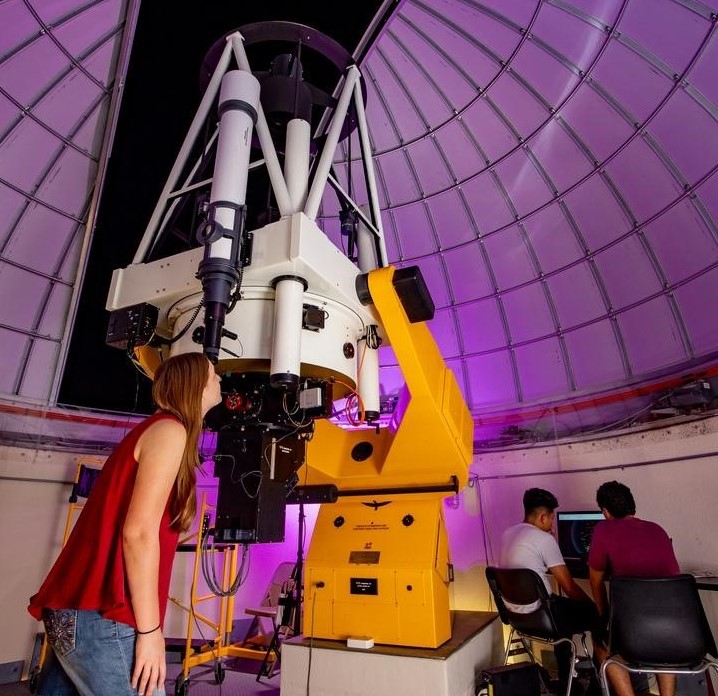Document Type
Article
Publication Title
Astronomy and Astrophysics
Abstract
Near-solar metallicity (and low-redshift) pair-instability supernova (PISN) candidates challenge stellar evolution models. Indeed, at such a metallicity, even an initially very massive star generally loses so much mass by stellar winds that it will avoid the electron-positron pair-creation instability. We use recent results showing that a magnetic field at the surface of a massive star can significantly reduce its effective mass-loss rate to compute magnetic models of very massive stars (VMSs) at solar metallicity and explore the possibility that such stars end as PISNe. We implement the quenching of the mass loss produced by a surface dipolar magnetic field into the Geneva stellar evolution code and compute new stellar models with an initial mass of 200 MȮ at solar metallicity, with and without rotation. This considerably reduces the total amount of mass lost by the star during its life. For the non-rotating model, the total (CO-core) mass of the models is 72.8 MȮ (70.1 MȮ) at the onset of the electron-positron pair-creation instability. For the rotating model, we obtain 65.6 MȮ (62.4 MȮ). In both cases, a significant fraction of the internal mass lies in the region where pair instability occurs in the log (T)-log (ρ) plane. The interaction of the reduced mass loss with the magnetic field efficiently brakes the surface of the rotating model, producing a strong shear and hence a very efficient mixing that makes the star evolve nearly homogeneously. The core characteristics of our models indicate that solar metallicity models of magnetic VMSs may evolve to PISNe (and pulsation PISNe).
DOI
10.1051/0004-6361/201730401
Publication Date
2017
Recommended Citation
Georgy, Cyril; Meynet, Georges; Ekström, Sylvia; Wade, Gregg A.; Petit, Véronique; Keszthelyi, Zsolt; and Hirschi, Raphael, "Possible Pair-Instability Supernovae At Solar Motallicity From Magnetic Stellar Progenitors" (2017). Aerospace, Physics, and Space Science Faculty Publications. 177.
https://repository.fit.edu/apss_faculty/177


